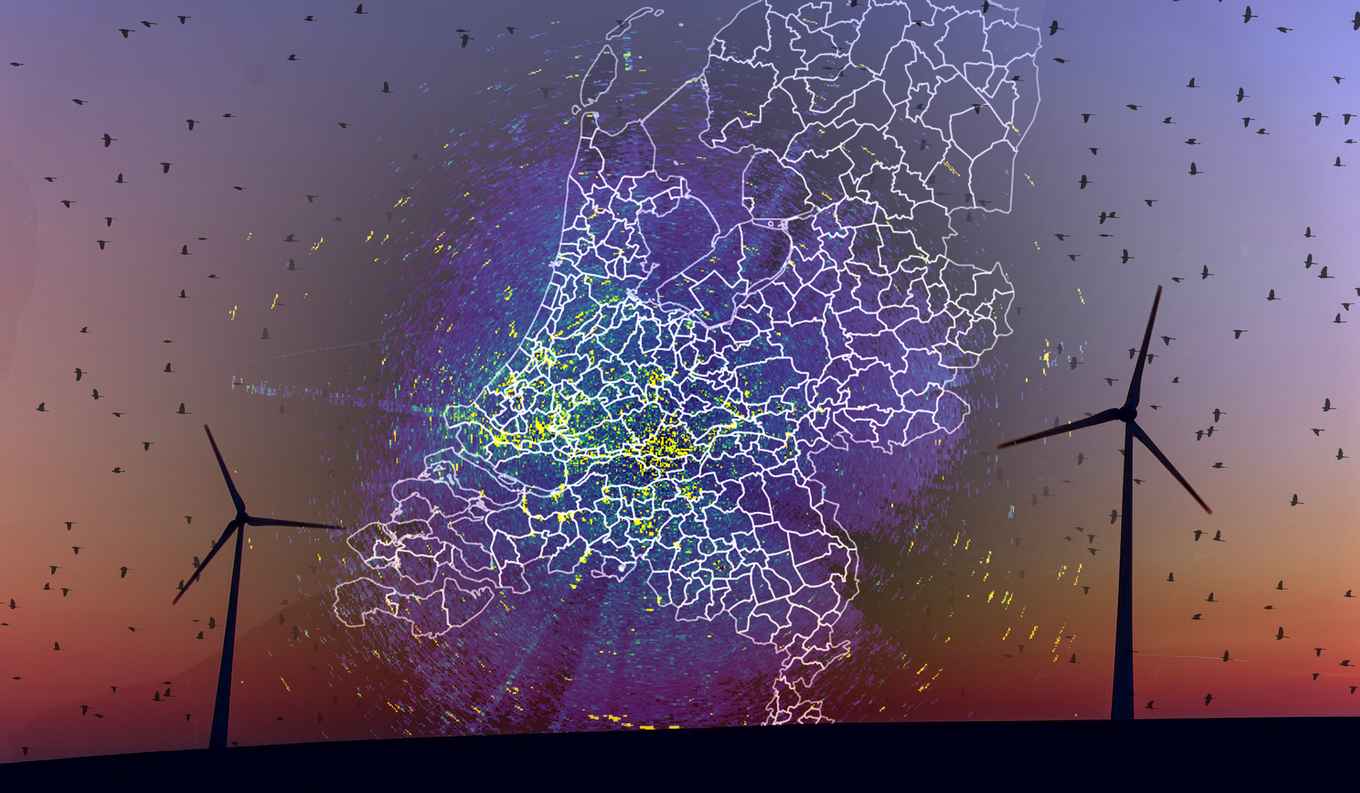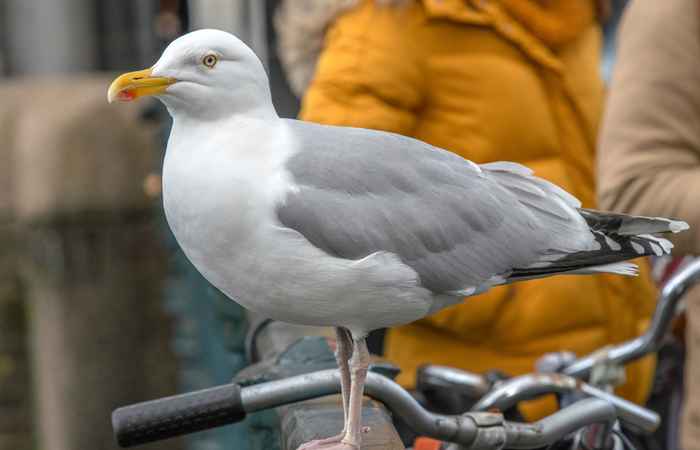Uncovering bird behaviour by scaling up and zooming in
16 September 2024

How can we make wind energy safer for birds on the move? And how do birds change the way they fly based on their environment? These are some of the questions that Judy Shamoun-Baranes, professor of animal movement ecology at the UvA's Institute for Biodiversity and Ecosystem Dynamics (IBED), aims to answer. Her research group wants to understand how birds interact with their environment and how changes in the landscape, such as the addition of wind turbines, influence their behaviour.
Their research could help to reduce the environmental impact of wind parks. Shamoun-Baranes explains: ‘One way of reducing the impact of wind parks is to predict bird migration, so that we can shut down turbines when necessary.’ One of her group members, Maja Bradarić, works on predicting bird migration patterns near offshore wind parks. Her models have already been used to temporarily pause wind turbines when intense migration was predicted. Group member Bart Hoekstra works on a similar project for wind energy on land.
Scaling up and zooming in
Despite this success, performing this type of research is very challenging. Shamoun-Baranes: ‘It’s very complicated to study birds if you want to track them in real-time, over long distances, and through all kinds of conditions. I don't think we could do this type of work without the assistance of technology.’
In order to scale up their research, the Shamoun-Baranes research group uses weather radars. ‘Since we study bird migration and large-scale movements, we try to quantify how many birds are in the air under different environmental conditions. Weather radars allow us to observe these patterns on a large scale. By using a network of radars, we can scale up our research.’ This technology allows the researchers to track bird migration over large parts of The Netherlands. They aim to enlarge this scope to tracking migration on a European scale.

In addition to radar, they also use GPS technology. Shamoun-Baranes: ‘We have flexible GPS systems that we helped design, which allow us to measure bird movements every few seconds. This lets us see behaviour on a very fine scale, enabling us to really zoom in.’
Pushing radar to the limit
The Shamoun-Baranes research group doesn't just use these technologies - they sometimes improve them as well. In one project, researcher Jans van Erp worked with a type of radar developed by a commercial company. He spent a lot of time digging into the details of the data and discussed the challenges he came across with the company. In this way, they could find ways to improve the technology.
‘It wasn't our original goal, but you can have an impact on technology by working with it and pushing it almost to its limits,’ says Shamoun-Baranes. Van Erp now works for the radar company, bringing his expertise to the industry.
Radar data has also been hard to find and access. Shamoun-Baranes worked with her research community to develop a system that automatically converts weather radar into bird migration data. The system is now publicly available. Shamoun-Baranes: ‘That was a really important output of a past European project that we had.’
Stepping outside
Although there is now a lot of environmental data freely available, Shamoun-Baranes stresses the importance of staying connected to the outside world. ‘I find it important to also spend time outside and talk to people in the field. They sometimes look at your data in a very different way. After presenting at a conference, somebody told me, ‘We're doing very similar work with humans!’. It sounds crazy, but there's so much that you can do with the same data.’
She also enjoys linking her work to society. A few years ago, her research group developed an app called VogelHetUit. This allowed the public to track birds and the environmental conditions and put it in the app. The researchers could use this to learn about local conditions, which is information they're often missing in their data.

Shamoun-Baranes. ‘People always found it so intriguing to learn that some gulls, living in a beautiful environment on Texel, travel all the way to Amsterdam to feed. A bird has to fly for around three hours and find enough food to make the trip worthwhile. That's quite incredible. In a scientific paper, this is boiled down into numbers. But when you tell stories to people, it takes on a new depth.’
Future impact
There is now a lot of interest in Shamoun-Baranes' research, mostly due to the challenges of scaling up wind energy and its influence on bird behaviour. Shamoun-Baranes: ‘We have been working on this step by step. I think it would be incredible if we can work towards really advancing our understanding of bird behaviour.’
Apart from her research, she is also passionate about creating a community. ‘A community where people collaborate and share ideas, expertise, and their tools. I think only by creating space for people, you can make bigger steps forward.’
Want to know more about research at our faculty? Take a look at our research page.